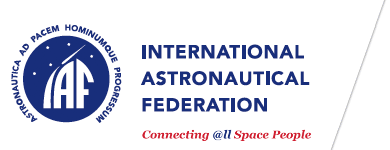AIOPEN – An EO platform that integrates and combines AI/ML methods to support model development and exploitation of applications
- Paper number
IAC-24,B5,1,3,x89164
- Author
Mr. Leslie Gale, Space Applications Services, Belgium
- Coauthor
Mr. Bernard Valentin, Space Applications Services, Belgium
- Coauthor
Mr. Garin Smith, Telespazio UK, United Kingdom
- Coauthor
Mr. Jonny Langstone, Telespazio UK, United Kingdom
- Coauthor
Ms. Barbara Scarda, Serco Europe, Italy
- Coauthor
Mr. Marco Pellengrini, SERCO S.p.A, Frascati, Rome, Italy, Italy
- Coauthor
Mr. Francesco Ferrante, SERCO S.p.A, Frascati, Rome, Italy, Italy
- Coauthor
Dr. Jakub Nalepa, KP Labs, Poland
- Coauthor
Dr. Daniel Kostrzewa, KP Labs, Poland
- Coauthor
Mr. Lukasz Tulczyjew, KP Labs, Poland
- Coauthor
Mr. Mateusz Przeliorz, KP Labs, Poland
- Coauthor
Mr. Jakub Sadel, KP Labs, Poland
- Coauthor
Mr. Georg Zitzlsberger, Technical University of Ostrava, Czech Republic
- Coauthor
Mr. Václav Svatoňe, Technical University of Ostrava, Czech Republic
- Coauthor
Mr. Radek Halfar, Technical University of Ostrava, Czech Republic
- Year
2024
- Abstract
\documentclass[10pt]{article} \usepackage[usenames]{color} %used for font color \usepackage{hyperref} \begin{document} AI/ML is a transversal skill set now being applied to EO services and application development. Although AI developers and the EO science and service developer communities have become engaged in developing models support for creating integrated solutions was lacking. AIOPEN makes it possible to develop new and innovative applications and services applying established AI/ML software development capabilities. AIOPEN provides users with a solution that supports the end-to-end AI model development lifecycle. This paper presents work performed in an ESA funded project to demonstrate how an existing EO data processing platform, EOPEN, can be extended to accommodate AI/ML developers. EOPEN was built using the Automated Service Builder (ASB) Framework developed by Space Applications Services. EOPEN is hosted in the ONDA Data and Information Access Service (DIAS). AIOPEN represents a significant step towards harnessing the power of AI/ML technologies for the advancement of Earth Observation data analyses. To do so AIOPEN utilises cutting-edge technology and a cloud-native approach to address challenges in big data management, access, processing, and visualisation. AIOPEN builds on existing technologies to extend the EOPEN platform combining technologies from the ASB (https://asb.spaceapplications.com), the ESA projects EOEPCA (\url{https://eoepca.org}) and AI4DTE (\url{https://eo4society.esa.int/projects/ai4dte-software-stack/}), OGC services and MLFlow (\url{https://mlflow.org}) Tracking Server. AIOPEN is a robust platform providing collaboration services, including labelling campaign management, seamless model and data sharing, and efficient search across local and remote catalogues. It facilitates the hosting and sharing of models and training data, training of AI models, integration into new applications, and effective management and tracking of AI assets offering scientists and industry professionals public services capable of bringing together the processing and data access capabilities. AIOPEN enables end-users (scientists and industry professionals) to leverage the vast amounts of EO data available and unlock valuable insights. Through community engagement activities AIOPEN fosters collaboration and gathers valuable feedback. To demonstrate and evaluate the capabilities of AIOPEN two showcases have been implemented: 1) Forest Cover Monitoring making use of a standard, well-established deep learning architectures like U-Nets for semantic image segmentation as the forest segmentation (in a single time point) is a binary semantic segmentation task. 2) Urban Change Detection using a Transformer Architecture EO data and Deep Neural Networks to detect urban related changes on the surface of the Earth to construct a digital twin of changes. The paper will conclude with a discussion of the evaluation and future work. \end{document}- Abstract document
- Manuscript document
IAC-24,B5,1,3,x89164.pdf (🔒 authorized access only).
To get the manuscript, please contact IAF Secretariat.
